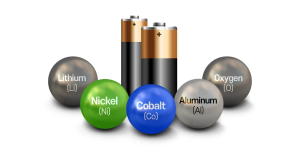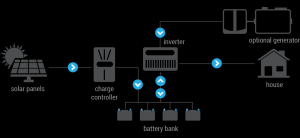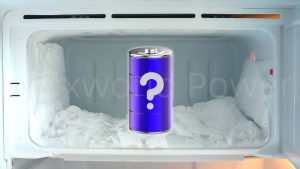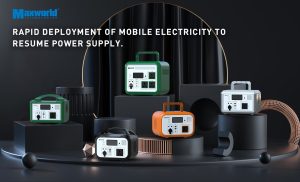LiFePO4 or LIthium-ion Batteries for Solar Products?
The two battery types that are most frequently used in solar equipment are LiFePO4 and lithium-ion. Everyone has unique benefits and drawbacks. Here is a quick summary of the key variations from the more well-known lead acid battery.
Lifepo4
Despite weighing much less than lead-acid batteries, lithium iron phosphate batteries have a higher cell density. They have a lower cell density than lithium-ion, on the other hand. This reduces their volatility and makes them safer to use.
A battery pack is created by connecting many cells in series. When completely charged, a battery made of four LiFePO4 cells in series produces a 12.8–14.2 volt pack. The LiFePO4 cells have four times the capacity of lead acid batteries, which makes them the closest to conventional lead-acid batteries.
LiFePO4 cells are stacked parallel to obtain the same density as lithium-ion cells in order to increase the capacity of the pack. As more cells must be connected in parallel to reach the same capacity as a lithium-ion battery pack, LiFePO4 battery packs will thus be larger.
Lithium-ion batteries should never be used in temperatures above 140°F, while LiFePO4 batteries can.
A LiFePO4 battery typically has a lifespan of 1500–2000 charge cycles or up to 10 years. In most cases, a lithium iron phosphate battery can maintain its charge for up to 350 days.
Lithium-ion
Because lithium-ion cells have a higher cell density than lithium-ion phosphate cells, fewer lithium-ion cells are required to reach the same capacity. But as a result of their higher cell density, they also have more instability.
A battery pack is created by connecting many cells in series. Lithium-ion cells can be stacked in parallel, just like with lithium iron phosphate, to expand the capacity of the pack.
Three lithium-ion cells are connected in series to create 12.6V for a 12V power pack, which is the voltage that sealed lead acid batteries are designed to have as their nominal output.
A lithium-ion battery basically lasts about 2 or 3 years, or 300 and 500 charging cycles. Typically, a lithium-ion battery pack can maintain its charge for up to 300 days.

Charging
Lithium-ion and LiFePO4 cell charging are extremely similar. A charge controller is first used to regulate the voltage and current that feed into the battery management system during charging from solar cells (BMS). Load balancing, short circuit protection, overvoltage protection, and undervoltage protection are all provided by the BMS.
Lead Acid
Naturally, lead acid batteries have been around for a very long time and continue to be a solid workhorse for a wide range of applications. Why then don’t they typically go hand in hand with solar gear? The main cause is weight. Lithium and lithium iron phosphate packs are lighter and have a higher cell density. Because of their tiny size and light weight, they may be installed in tighter locations like solar charging poles and provide a longer operational period.
FAQ
1. Do your batteries require a special charger to be used?
No. The items from Eco Tree can be charged with any compatible lithium battery charger.
2. How long do lithium batteries made by Eco Tree last?
longer than a sealed lead-acid/AGM unit by up to 15.
3. What distinguishes lithium-ion from LiFePO4?
LiFePO4 offers the benefit of being both safer and more resilient (cycle life is 4-5 times longer). This is a crucial benefit since LiFePO4 cells won’t overheat or even catch fire like lithium-ion cells might in some applications.
4.I’m attempting to use a solar panel to recharge my battery. Is a solar charger controller still required if the battery pack already has PCB/PCM protection?
Yes, you do need a solar charger controller since it will govern how much electricity your battery pack receives from the solar panel.
5. Would a typical SLA controller work well if I wanted to solar charge a LiFePO4/Lithium Ion battery that already has a PCB?
We usually advise using a LiFePO4/Lithium Ion solar controller with lithium-ion batteries. especially if the battery is being used as a UPS (backup power supply). The PCB may eventually be harmed by the Lead Acid solar controller’s continual pulse current delivery to the battery. As a result, the battery won’t be protected by the PCB when it should be.













